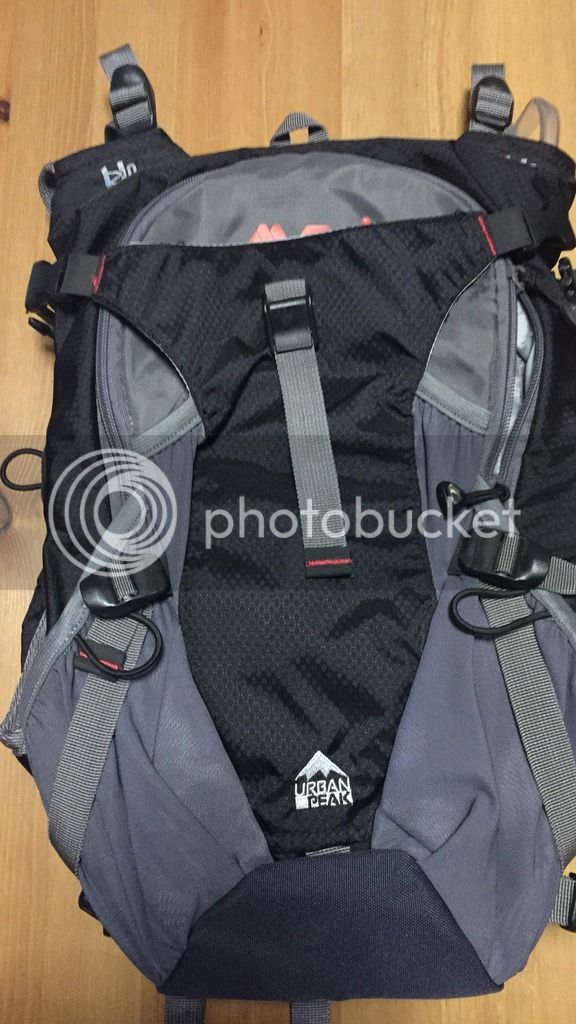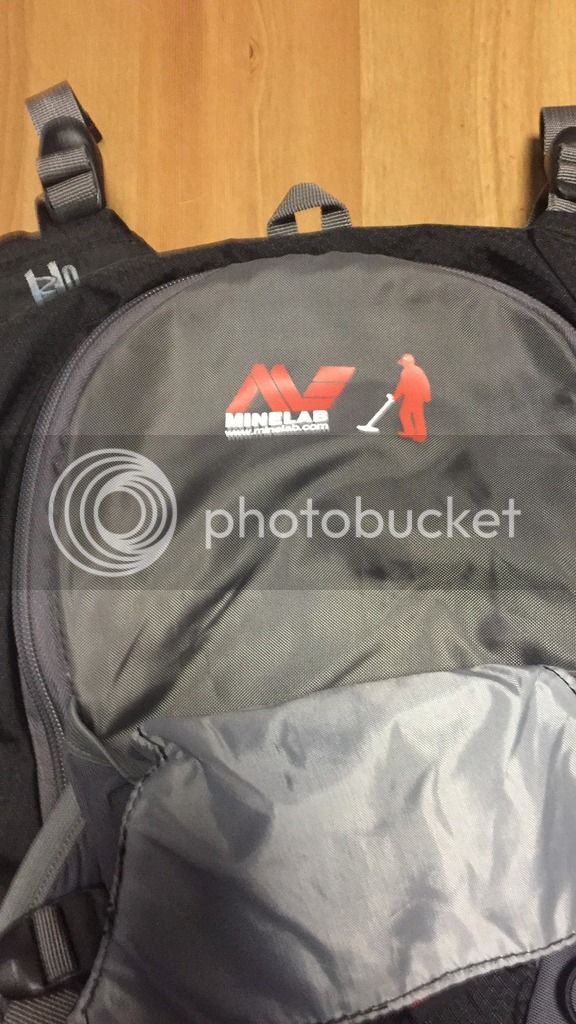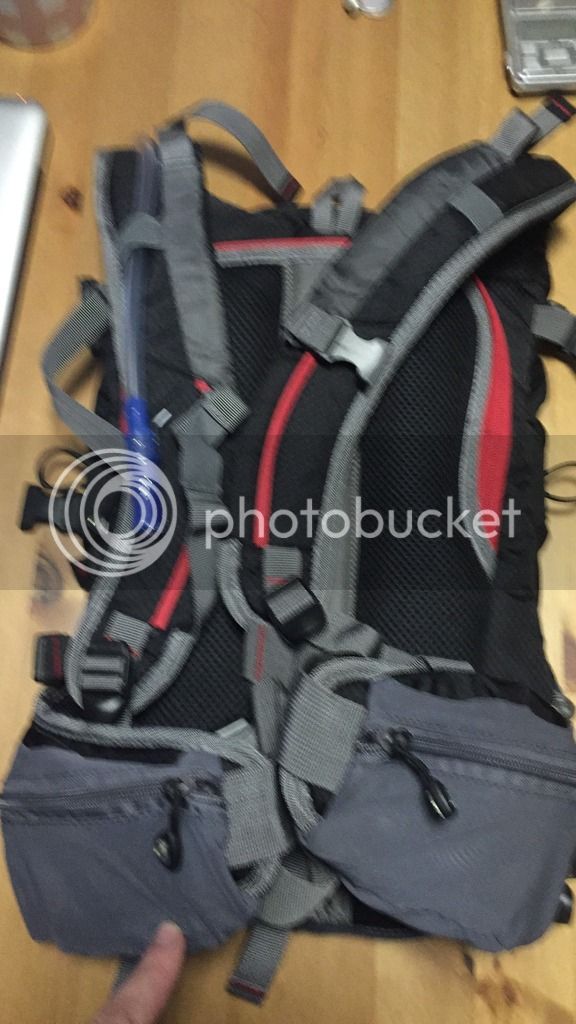Might sit in on a 4 wheels and tow it beside my wheelchair. 
You are using an out of date browser. It may not display this or other websites correctly.
You should upgrade or use an alternative browser.
You should upgrade or use an alternative browser.
Today I BOUGHT
- Thread starter Nugget
- Start date

Help Support Prospecting Australia:
This site may earn a commission from merchant affiliate
links, including eBay, Amazon, and others.
- Joined
- Sep 4, 2014
- Messages
- 8,935
- Reaction score
- 6,776
Sounds like a plan, You should tell the Mrs that She has a 50% share in that coil So she can do the digging,Jaros said:Might sit in on a 4 wheels and tow it beside my wheelchair.
I saved over $300-00 on the new price--It is new , as he never used it. I think the 21" is over $460-00. I paid $149-00..Yippee
Nice coils Jaros, you'll be digging halfway to China with those. 
- Joined
- Sep 4, 2014
- Messages
- 8,935
- Reaction score
- 6,776
Jaros said:I saved over $300-00 on the new price--It is new , as he never used it. I think the 21" is over $460-00. I paid $149-00..Yippee
Good for you, ya need to grab em when they come up like that, Deals like that are few and far between, In June I bought 2 small coils second hand for about half price, So you got an incredible there.
well done mate, John
I have a bit of a head start there. My wife Carolyn's great, great Grandfather was Chinese. He was Blaxlands Carpenter in NSW and the first Chinese landowner in NSW as when he did his time with Blaxland he bought a plot of land. Fair bit if history in her family.Heatho said:Nice coils Jaros, you'll be digging halfway to China with those.
Great story Jaros, is there more?
Mackka
Mackka
Sorry a bit off topic:
This is Kate Bagnalls blog
Correction he was Blaxlands carpenter.
The Shying family -my wifes side reside in Melbourne.
Mak Sai Ying 1762 Canton- 18 June 1880 Sydney,was the first known Chinese born settler to Australia,arriving in 1818.He was known by many names,including John Pong Shying,Mak Sai Pang,Mai Shi Ying,Mark Opong,and possibly John Sheen.He worked as a carpenter,living with John Blaxland on his Newlington Estate.After three years he worked at Elizabeth Farm for Elizabeth Macarthur.He married Sarah Jane Thompson (1802-1836) on 3 February 1823 in St John's Church in Parramatta.
Mak Sai Ying 1762 Canton- 18 June 1880 Sydney,was the first known Chinese born settler to Australia,arriving in 1818.He was known by many names,including John Pong Shying,Mak Sai Pang,Mai Shi Ying,Mark Opong,and possibly John Sheen.He worked as a carpenter,living with John Blaxland on his Newlington Estate.After three years,he worked at Elizabeth Farm for Elizabeth Macarthur.He married Sarah Jane Thompson (1802-1836) on 3 February 1823 in St John's Church in Parramatta.
Thompson 1802, 1880 Sydney, John, Shying Mak,
Man Sue Bach, 17901862: the oldest Chinese colonist in New South Wales
All in all we know very little about Australias very earliest Chinese residents.
Mak Sai Ying, or John Shying, who arrived in Sydney as a free settler in 1818, working first as a carpenter with John Blaxland before establishing himself in business at Parramatta, marrying twice to white women and fathering four sons. Family history research papers about Shying and his descendents are held in Sydneys Mitchell Library.
Histories by Eric Rolls, Shirley Fitzgerald, Janis Wilton and Ian Jack have sketched the arrival of a small number of other Chinese men who arrived in Sydney in the three decades after Shyingsailors, other carpenters and labourers brought out on contract to work primarily in agriculture.
Sydney in 1820. Australian National Maritime Museum Collection 00000858.
In the 1820s there is record of John Dunmore LangSydneys first Presbyterian minister who himself only arrived in 1823employing Chinese carpenters named Queng and Tchiou in 1827, and of two Chinese men (a cook and a carpenter) being among the multicultural labour force employed by the Macarthurs at Elizabeth Farm at Parramatta. The NSW Colonial Secretarys correspondence shows that three Chinese carpentersAhehew, Ahoun and Awagerequested to remain permanently in the colony before 1825. Another man, Achin, was admitted to the general hospital in 1824. And the 1828 census recorded Ahchun, Ahfoo and Ahlong in the employ of a T.G. Pitman in Sydney.
In 1830, there was the remarkable arrival of Ah Nee and three countrymen who landed in Sydney after seven months at sea in a small sailing vessel. As noted by Ian Jack, they were employed as stockmen by Andrew Brown on his substantial grazing properties on the Castlereagh River. (Perhaps even more remarkable is that Ah Nee spent the next 75 years living in central-western New South Wales, where he worked as an agricultural labourer, before he died aged 117 in 1915.)
The colonial shipping news also records the comings and goings of Chinese mensuch as the arrival of an unnamed Chinese carpenter on the Nimrod in December 1827; the departure of Yan, Hang and Nee for Mauritius on the Bee in June 1832; and the arrival of four unnamed Chinese labourers on the Regia from Singapore in September 1838.
In my PhD study of Chinese-European marriages in colonial New South Wales, John Shyings two marriages were the only Chinese marriages I found before the early 1850s. But I now have evidence of at least two or three more (thanks to Trove). One of these was between a Chinese man named James Tame, a Catholic catechist converted by the Portuguese (presumably in or near Macau), and Englishwoman Mary Rapsey, who seems to have been an assigned convict at the time of their marriage in 1839. A family of four Chinese children and their parents were reported as living at Goulburn in March 1842 (Im pretty certain these would be mixed-race children, as I havent identified a Chinese mother in the colony before the 1860s). The other early mixed marriage I have come across involved a previously unknown contemporary of John Shying named Man Sue Bach.
The oldest Chinese colonist?
When he died in 1862, Man Sue Bach was 72 years old and had been living in New South Wales for 42 years, suggesting he had arrived in the colony in around 1820. On reporting his death, the Empire newspaper stated that Man Sue Bach was the oldest Chinese colonist, as he was considered the oldest member of the Chinese race in the colony and had been the longest resident.
(What about John Shying, you might ask. Why wasnt he the oldest? Hadnt he arrived earlier, wasnt he about the same age? Shying was born in 1796, but there is no record of his death in New South Wales. He may have returned to China after the death of his second wife in the 1840s, or there is also the possibility that he married for a third time and died under the name John Sheen in 1880. Does the Empires claim to Man Sue Bachs status as oldest Chinese colonist in 1862 debunk the John Shying/Sheen story? Maybe, maybe not. But as John Shyings son was an undertaker at Man Sue Bachs burial, it seems likely that if John Shying/Sheen was living in or around Sydney the claim about Man Sue Bach probably wouldnt have been made.)
Being something of a curiosity, both the Empire and Sydney Morning Herald reported on Man Sue Bachs passing in some detail, and their reports were reprinted in papers such as the Maitland Mercury and Launcestons Cornwall Chronicle. My account of Man Sue Bachs life and death is based on these press accounts and on the details provided on his death certificates. I havent been able to locate other records, but thats not to say he wont pop up somewhere elseversions of his name Ive found are Man Sue Bach, Mum Shou Pac, John Ah Shue Bach, John A. Sue Bach, John Ah Sue and John a Shue. There may well be formal records of his baptism, his marriage and the birth of his children, but I havent yet managed to track them down.
A brief sketch of life
Man Sue Bach was born around 1790 and he was said to have been a native of Hongkong. Although he could have been born in Hong Kong itself, it is equally possible that his native place was inland from Hong Kong in Guangdong province, as his birth and later departure for overseas ports took place well before the ceding of Hong Kong to the British in 1842 after the first Opium War.
He arrived in Sydney around 1820 from Saint Helena, the tiny British outpost in the mid-Atlantic most famous as Napoleon Bonapartes place of exile. Controlled by the British East India Company, Saint Helena was an important stop on the sea route between Britain and India, where ships restocked with supplies, and the majority of its population were African slaves. After Britain abolished the Atlantic slave trade, however, the East India Company looked to China to provide a source of labour. From 1810 Chinese workers began arriving on the island, with the population peaking at over 600 men in 1817. Most worked as agricultural labourers and were indentured for contracts of three to five years.
After he arrived in New South Wales, Man Sue Bach travelled inland and eventually settled in the New England region, where he was said to have married and had a family of at least two sons. He also converted to Catholicism. In more recent years he had moved to Sydney where he kept a lodging house on Lower George Street, which was then the citys fledgling Chinatown. He also made the arrangements for provisioning of ships leaving for China. Between these two enterprises he supported himself, even at his advanced age. The press accounts contain no more detail about his earlier life in the colony.
and death
Man Sue Bach died on 4 June 1862, at about half past nine in the evening. He had been lying on his bed in his home at 169 Lower George Street when, at about 8.30 pm, he started and cried out in Chinese that he was dying. Dr Wright of Hunter Street was called for, but Man Sue Bach died soon after his arrival. When the news of his death spread, the Chinese storekeepers in Lower George Street and other parts of the city closed their shops in mourning.
In the press reports there is no mention of Man Sue Bachs wife being present, so it seems probable that she had predeceased him and perhaps even that he had little contact with his adult sons. No details about a marriage or children were given when his death was registered, suggesting that the details were not known to those around him, although the press reported that his sons were still in New England and he had a brother at Lambing Flat.
The Sydney Morning Herald said that Man Sue Bach had been a valued counsellor and friend to his countrymen in Sydney and, according to the Empire, they called him by the name Governor. Having lived in the colony for more than forty years, Man Sue Bach spoke English perfectly and understood how colonial life worked, meaning that many Chinese had sought his advice on their personal welfare or business undertakings. He also helped them financially, being very ready to assist them with loans of small sums of money when in distress. He was honoured and respected by his fellow Chinese colonists, too, because of his old age, and the Empire declared that he would be much missed.
A notice of Man Sue Bachs death was published in the Sydney Morning Herald on 5 June (and reprinted on 21 June), and the City Coroner held an inquest at the Prince of Wales Hotel in George Street North the following day. Although he had enjoyed good health during his long life, during the previous few months Man Sue Bach had been ailing, complaining of a pain in the back. Based on the diagnosis of Dr Wright, who attended Man Sue Bach in his last minutes, the coroner found that death was due to an apoplectic fit.
Man Sue Bach was buried in the Roman Catholic cemetery. The funeral cortege that left from his Lower George Street home at 3 oclock on the afternoon of Friday, 6 June, comprised a long string of carriages, numbering forty-one in total and including four mourning coaches. The funeral was attended by many Chinese, but also by white diggers and others, who, the Empire noted, seemed to participate in their regret. The death was registered twice, first by the coroner on 30 June 1862 and then, on 30 August 1862, by the undertaker, Eliza Hanslow. Witnesses to his burial were Thomas Hanslow and John Shying (son of our original John Shying), who was a foreman with the Hanslow familys firm of undertakers. Several years later John Shying junior set up business as an undertaker with his brother George in George Street South.
Jaros.
This is Kate Bagnalls blog
Correction he was Blaxlands carpenter.
The Shying family -my wifes side reside in Melbourne.
Mak Sai Ying 1762 Canton- 18 June 1880 Sydney,was the first known Chinese born settler to Australia,arriving in 1818.He was known by many names,including John Pong Shying,Mak Sai Pang,Mai Shi Ying,Mark Opong,and possibly John Sheen.He worked as a carpenter,living with John Blaxland on his Newlington Estate.After three years he worked at Elizabeth Farm for Elizabeth Macarthur.He married Sarah Jane Thompson (1802-1836) on 3 February 1823 in St John's Church in Parramatta.
Mak Sai Ying 1762 Canton- 18 June 1880 Sydney,was the first known Chinese born settler to Australia,arriving in 1818.He was known by many names,including John Pong Shying,Mak Sai Pang,Mai Shi Ying,Mark Opong,and possibly John Sheen.He worked as a carpenter,living with John Blaxland on his Newlington Estate.After three years,he worked at Elizabeth Farm for Elizabeth Macarthur.He married Sarah Jane Thompson (1802-1836) on 3 February 1823 in St John's Church in Parramatta.
Thompson 1802, 1880 Sydney, John, Shying Mak,
Man Sue Bach, 17901862: the oldest Chinese colonist in New South Wales
All in all we know very little about Australias very earliest Chinese residents.
Mak Sai Ying, or John Shying, who arrived in Sydney as a free settler in 1818, working first as a carpenter with John Blaxland before establishing himself in business at Parramatta, marrying twice to white women and fathering four sons. Family history research papers about Shying and his descendents are held in Sydneys Mitchell Library.
Histories by Eric Rolls, Shirley Fitzgerald, Janis Wilton and Ian Jack have sketched the arrival of a small number of other Chinese men who arrived in Sydney in the three decades after Shyingsailors, other carpenters and labourers brought out on contract to work primarily in agriculture.
Sydney in 1820. Australian National Maritime Museum Collection 00000858.
In the 1820s there is record of John Dunmore LangSydneys first Presbyterian minister who himself only arrived in 1823employing Chinese carpenters named Queng and Tchiou in 1827, and of two Chinese men (a cook and a carpenter) being among the multicultural labour force employed by the Macarthurs at Elizabeth Farm at Parramatta. The NSW Colonial Secretarys correspondence shows that three Chinese carpentersAhehew, Ahoun and Awagerequested to remain permanently in the colony before 1825. Another man, Achin, was admitted to the general hospital in 1824. And the 1828 census recorded Ahchun, Ahfoo and Ahlong in the employ of a T.G. Pitman in Sydney.
In 1830, there was the remarkable arrival of Ah Nee and three countrymen who landed in Sydney after seven months at sea in a small sailing vessel. As noted by Ian Jack, they were employed as stockmen by Andrew Brown on his substantial grazing properties on the Castlereagh River. (Perhaps even more remarkable is that Ah Nee spent the next 75 years living in central-western New South Wales, where he worked as an agricultural labourer, before he died aged 117 in 1915.)
The colonial shipping news also records the comings and goings of Chinese mensuch as the arrival of an unnamed Chinese carpenter on the Nimrod in December 1827; the departure of Yan, Hang and Nee for Mauritius on the Bee in June 1832; and the arrival of four unnamed Chinese labourers on the Regia from Singapore in September 1838.
In my PhD study of Chinese-European marriages in colonial New South Wales, John Shyings two marriages were the only Chinese marriages I found before the early 1850s. But I now have evidence of at least two or three more (thanks to Trove). One of these was between a Chinese man named James Tame, a Catholic catechist converted by the Portuguese (presumably in or near Macau), and Englishwoman Mary Rapsey, who seems to have been an assigned convict at the time of their marriage in 1839. A family of four Chinese children and their parents were reported as living at Goulburn in March 1842 (Im pretty certain these would be mixed-race children, as I havent identified a Chinese mother in the colony before the 1860s). The other early mixed marriage I have come across involved a previously unknown contemporary of John Shying named Man Sue Bach.
The oldest Chinese colonist?
When he died in 1862, Man Sue Bach was 72 years old and had been living in New South Wales for 42 years, suggesting he had arrived in the colony in around 1820. On reporting his death, the Empire newspaper stated that Man Sue Bach was the oldest Chinese colonist, as he was considered the oldest member of the Chinese race in the colony and had been the longest resident.
(What about John Shying, you might ask. Why wasnt he the oldest? Hadnt he arrived earlier, wasnt he about the same age? Shying was born in 1796, but there is no record of his death in New South Wales. He may have returned to China after the death of his second wife in the 1840s, or there is also the possibility that he married for a third time and died under the name John Sheen in 1880. Does the Empires claim to Man Sue Bachs status as oldest Chinese colonist in 1862 debunk the John Shying/Sheen story? Maybe, maybe not. But as John Shyings son was an undertaker at Man Sue Bachs burial, it seems likely that if John Shying/Sheen was living in or around Sydney the claim about Man Sue Bach probably wouldnt have been made.)
Being something of a curiosity, both the Empire and Sydney Morning Herald reported on Man Sue Bachs passing in some detail, and their reports were reprinted in papers such as the Maitland Mercury and Launcestons Cornwall Chronicle. My account of Man Sue Bachs life and death is based on these press accounts and on the details provided on his death certificates. I havent been able to locate other records, but thats not to say he wont pop up somewhere elseversions of his name Ive found are Man Sue Bach, Mum Shou Pac, John Ah Shue Bach, John A. Sue Bach, John Ah Sue and John a Shue. There may well be formal records of his baptism, his marriage and the birth of his children, but I havent yet managed to track them down.
A brief sketch of life
Man Sue Bach was born around 1790 and he was said to have been a native of Hongkong. Although he could have been born in Hong Kong itself, it is equally possible that his native place was inland from Hong Kong in Guangdong province, as his birth and later departure for overseas ports took place well before the ceding of Hong Kong to the British in 1842 after the first Opium War.
He arrived in Sydney around 1820 from Saint Helena, the tiny British outpost in the mid-Atlantic most famous as Napoleon Bonapartes place of exile. Controlled by the British East India Company, Saint Helena was an important stop on the sea route between Britain and India, where ships restocked with supplies, and the majority of its population were African slaves. After Britain abolished the Atlantic slave trade, however, the East India Company looked to China to provide a source of labour. From 1810 Chinese workers began arriving on the island, with the population peaking at over 600 men in 1817. Most worked as agricultural labourers and were indentured for contracts of three to five years.
After he arrived in New South Wales, Man Sue Bach travelled inland and eventually settled in the New England region, where he was said to have married and had a family of at least two sons. He also converted to Catholicism. In more recent years he had moved to Sydney where he kept a lodging house on Lower George Street, which was then the citys fledgling Chinatown. He also made the arrangements for provisioning of ships leaving for China. Between these two enterprises he supported himself, even at his advanced age. The press accounts contain no more detail about his earlier life in the colony.
and death
Man Sue Bach died on 4 June 1862, at about half past nine in the evening. He had been lying on his bed in his home at 169 Lower George Street when, at about 8.30 pm, he started and cried out in Chinese that he was dying. Dr Wright of Hunter Street was called for, but Man Sue Bach died soon after his arrival. When the news of his death spread, the Chinese storekeepers in Lower George Street and other parts of the city closed their shops in mourning.
In the press reports there is no mention of Man Sue Bachs wife being present, so it seems probable that she had predeceased him and perhaps even that he had little contact with his adult sons. No details about a marriage or children were given when his death was registered, suggesting that the details were not known to those around him, although the press reported that his sons were still in New England and he had a brother at Lambing Flat.
The Sydney Morning Herald said that Man Sue Bach had been a valued counsellor and friend to his countrymen in Sydney and, according to the Empire, they called him by the name Governor. Having lived in the colony for more than forty years, Man Sue Bach spoke English perfectly and understood how colonial life worked, meaning that many Chinese had sought his advice on their personal welfare or business undertakings. He also helped them financially, being very ready to assist them with loans of small sums of money when in distress. He was honoured and respected by his fellow Chinese colonists, too, because of his old age, and the Empire declared that he would be much missed.
A notice of Man Sue Bachs death was published in the Sydney Morning Herald on 5 June (and reprinted on 21 June), and the City Coroner held an inquest at the Prince of Wales Hotel in George Street North the following day. Although he had enjoyed good health during his long life, during the previous few months Man Sue Bach had been ailing, complaining of a pain in the back. Based on the diagnosis of Dr Wright, who attended Man Sue Bach in his last minutes, the coroner found that death was due to an apoplectic fit.
Man Sue Bach was buried in the Roman Catholic cemetery. The funeral cortege that left from his Lower George Street home at 3 oclock on the afternoon of Friday, 6 June, comprised a long string of carriages, numbering forty-one in total and including four mourning coaches. The funeral was attended by many Chinese, but also by white diggers and others, who, the Empire noted, seemed to participate in their regret. The death was registered twice, first by the coroner on 30 June 1862 and then, on 30 August 1862, by the undertaker, Eliza Hanslow. Witnesses to his burial were Thomas Hanslow and John Shying (son of our original John Shying), who was a foreman with the Hanslow familys firm of undertakers. Several years later John Shying junior set up business as an undertaker with his brother George in George Street South.
Jaros.
Thanks for your time and effort Jaros, another great story.
Regards
Mackka
Regards
Mackka
No worries Mackka. Tis a pity he wasn't a Gold Miner. Would have had some great tales.
Jaros
Jaros
- Joined
- Sep 1, 2015
- Messages
- 4,228
- Reaction score
- 9,640
http://search.informit.com.au/documentSummary;dn=775020787661930;res=IELENG can you find any info in Ping Que oe Quee?
this all I can find.
this all I can find.
Sorry Dave. I'm not into geneology that much. :|
Jaros said:My 21" x 17" Detech SEF arrived today -tis BIG.
https://www.prospectingaustralia.com/forum/img/member-images/1122/1467364867_img_0240.jpg
Mate! Does that coil come with a Kph rating ? Well done a great buy !
Muk said:Bought a 2$ steel rake from Eaglehawk tip shop going to add a bit of flat bar along back edge and make the handle collapse able to carry in a back pack out bush cheers Muk.
Muk, Great buy and probably better/ stronger than the sheit off the shelf.
I,ve been on the shop for some used aluminum walkin sticks for a handle for mine.
Strong ,slide down small and light to carry.
Cheers
Lucky man.
A package arrived today
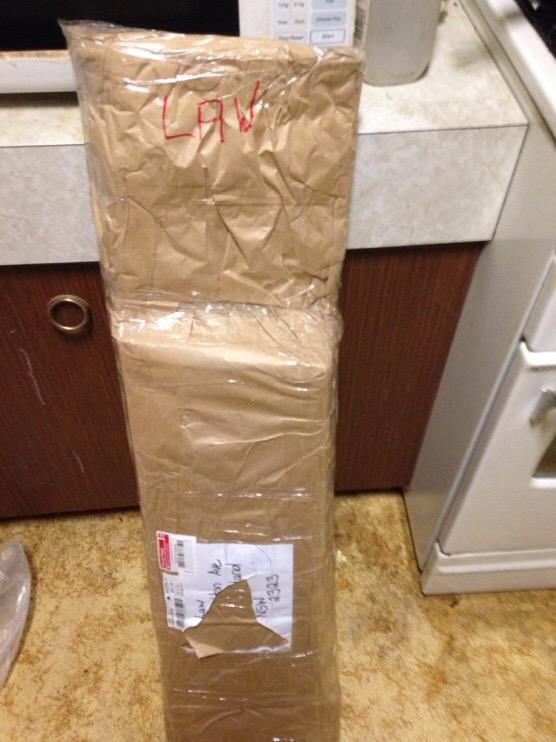 From Cabwoody.
From Cabwoody.
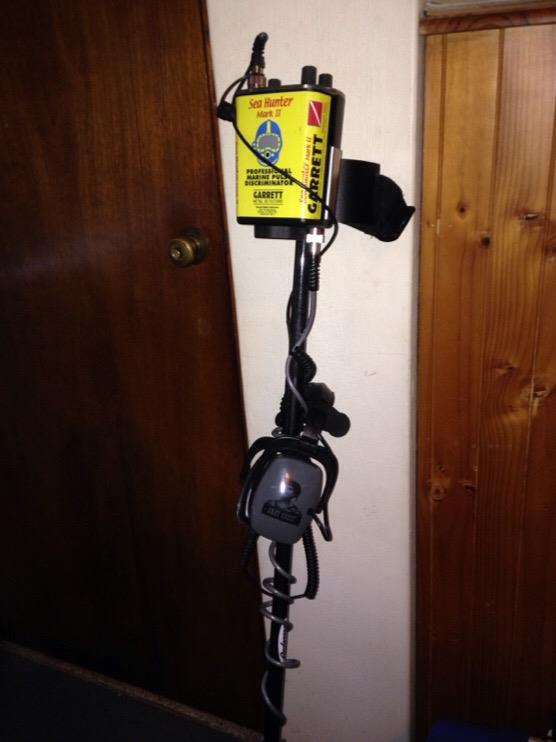
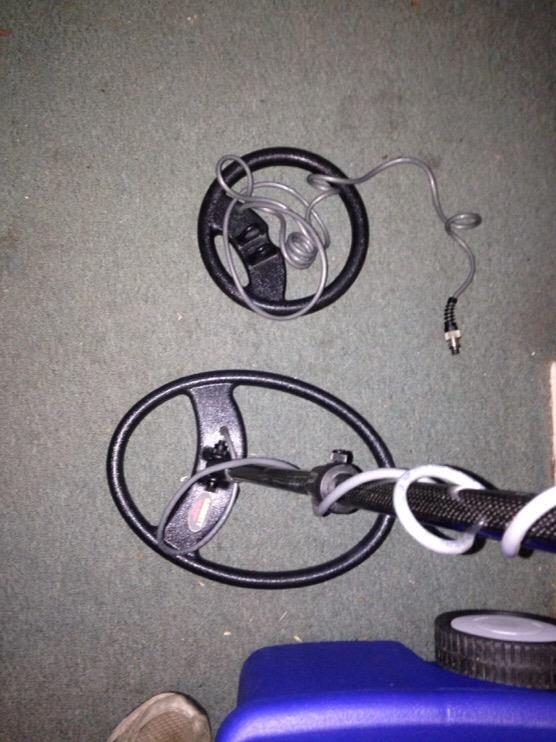 . Thanks mate. Look Out Beaches. Cheers.
. Thanks mate. Look Out Beaches. Cheers.



Looks in great nick.
Similar threads
- Replies
- 4
- Views
- 460



